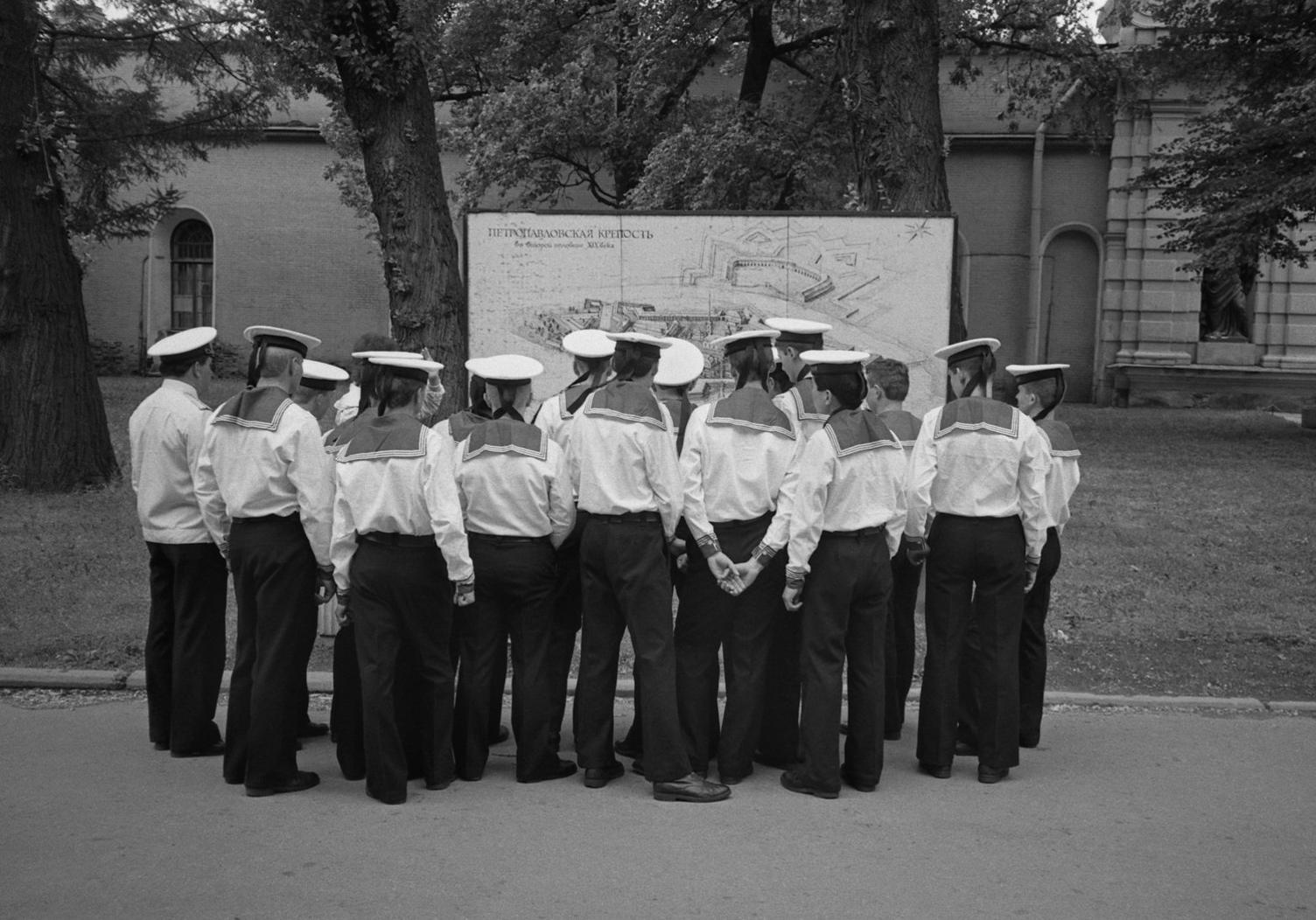Reporting from Soviet Russia
- Published
Roger Clark worked as a BBC producer and broadcaster for many years, particularly for Radio 4 and the BBC World Service. His work would often take him to the then Soviet Union, where he visited Leningrad, now known as St Petersburg, many times between 1986 to 1992, taking thousands of pictures.
Here he looks back at some of the pictures he took in what, in 1983, US President Ronald Reagan called "the evil empire".

Many of the city's sculptures were created by the state artist, Mikhail Anikushin and I produced a photo-essay of him at work in his vast studio.

A student at the Academy of Arts in St Petersburg. 1991.

I was surprised to see artists freely at work in the streets and even more surprised to find pop art in the then Leningrad Police Academy. The academy was housed in a former monastery and had stained-glass panels representing Soviet police activities in pop art form.

Militarisation was visible everywhere. Soviet Russia was a country in uniform. Here, sailors are seen at the Peter and Paul Fortress, in St Petersburg.

Boys played on wrecked Mig fighters, all that jagged metal.

In 1990, I spent three days in the Kronstadt naval base - the island fortress that guards St Petersburg and home of the Baltic Fleet. For decades, the island was off limits to foreigners.

Cadets at the Nakhimov Naval School during breakfast.

Also, something more sinister, the Levashovo cemetery, where thousands of victims of Stalin's terror - people shot without trial during the years 1937-1954, were buried in unmarked graves and the ground undulated underfoot. Attached to the trees were photos and messages commemorating the dead.

I was also caught up in the fall of Communism under Mikhail Gorbachev and Boris Yeltsin.

I photographed giant demonstrations, including a Lenin lookalike.

I photographed democrats inside the Smolny headquarters after the failed August 1991 coup. I got into the private suite of the Communist boss Grigory Romanov, where a giant portrait of Lenin loomed over his desk.

And I caught Ronald Reagan at the Winter Palace in September 1990, here with his wife Nancy.

I was in the City Hall - housed in the Mariinsky Palace - on 30 September 1991 to photograph a meeting in one of the golden rooms. Britain's Secretary of State for Employment, Michael Howard, had come to sign a new trade deal, sitting opposite the city's mayor, Anatoli Sobchak. Although the press photographers were asked to leave after taking a few shots, the officials allowed me to stay and photograph the meeting - provided I avoided using flash. I had the room to myself and, creeping forward on silent shoes, photographed a stern-looking Mr Sobchak over the shoulder of Michael Howard and his team. Beside the mayor, sat a solemn-looking young man whom I'd never seen before. Many years later, as I re-examined my negatives, I discovered his identity. I had caught with my camera someone who would make his mark on the world - Vladimir Putin.
All photographs © Roger Clark